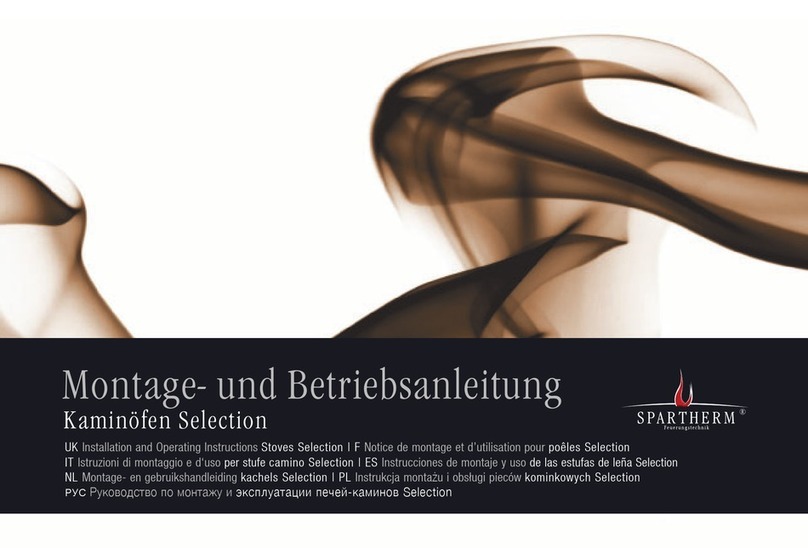
7630564_1
3.0 INSTALLATION
THE INSTALLATION OF THIS FIREPLACE, CONSTRUCTION
OF THE FIREPLACE ENCLOSURE AND THE FINISHING AND
COMMISSIONING OF THE INSTALLATION IS A HIGHLY
SPECIALIST TASK. ONLY ESCEA TRAINED AND APPROVED
TRADESMEN SHOULD BE USED. FAILURE TO FOLLOW THESE
REQUIREMENTS WILL VOID ALL WARRANTY TERMS.
3.1 INSTALLATION GENERAL
THIS APPLIANCE AND ITS COMPONENTS ARE DESIGNED
TO BE INSTALLED AND OPERATED AS A SYSTEM. ANY
ALTERATION TO OR SUBSTITUTION FOR ITEMS IN THIS
SYSTEM, UNLESS ALLOWED BY THESE INSTALLATION
INSTRUCTIONS, WILL VOID THE LISTING AND MAY VOID THE
PRODUCT WARRANTY. IT MAY ALSO CREATE A HAZARDOUS
INSTALLATION.
READ THROUGH THESE INSTRUCTIONS THROUGHLY
BEFORE STARTING YOUR INSTALLATION AND FOLLOW THEM
CAREFULLY THROUGHOUT YOUR PROJECT.
• Before beginning your installation, consult with your local building
code agency or fire ocials and insurance representative to ensure
compliance.
• Non-toxic smoke will be emitted during the paint curing process; to help
dissipate the smoke, open a window near the appliance.
• Remove any dust or debris o the top of the appliance before firing the
appliance as the paint will become soft as the appliance heats up and will
harden as the appliance cures. To cure the paint on your appliance, burn
your appliance moderately hot during the first few fires.
• To keep the door gasket from sticking to the appliance as the paint is
curing; periodically open the fireplace’s door.
• For the first two weeks use generous amounts of fuel and burn the
appliance with the air control (if applicable) fully open for an hour as the
appliance goes through a process of eliminating moisture in the steel and
firebricks. The initial heat output will be reduced while the moisture is
being drawn from the appliance and it will be necessary to build several
hot fires to remove this moisture.
DURING THIS PROCESS DO NOT OVERFIRE THE APPLIANCE.
REDUCE THE AMOUNT OF AIR COMING INTO THE APPLIANCE
IF THE APPLIANCE OR CHIMNEY BECOMES RED.
The chimney vent system used on your wood burning appliance should be
designed with the least amount of restriction possible to enable the exhaust
products to easily flow through it. Chimney vent systems that are too short
or too long can also have an adverse eect on the flow of exhaust through it.
The wood burning appliance and chimney vent system also requires a
sucient supply of combustion air not only to support the combustion in
the combustion chamber but to replace the exhaust leaving it so it can flow
freely up through the vent system and out into the atmosphere. It is the
correct balance of combustion air and the chimney vent system that will
ensure the appliance provides you with its optimum performance.
Be sure to provide sucient combustion air. There are many other
appliances in your home competing for air such as: a kitchen range hood,
forced air heating devices or a bathroom exhaust fan.
WEAR GLOVES AND SAFETY GLASSES FOR PROTECTION.
CAREFULLY FOLLOW THE INSTRUCTIONS FOR INSTALLATION
AND USE. FAILURE TO DO SO MAY RESULT IN A FIRE,
ESPECIALLY IF COMBUSTIBLES ARE TOO CLOSE TO THE
APPLIANCE OR CHIMNEY AND AIR SPACES ARE BLOCKED,
PREVENTING THE FREE MOVEMENT OF COOLING AIR.

































